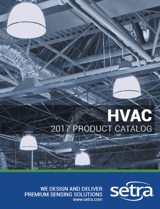Pressure Sensors In Critical Environments
One of the most important decision that mechanical designers, engineers, and architects can make is the selection of a low-differential pressure transducer for critical-care ventilation. These transducers perform precise monitoring and contamination control of isolation-room pressures in critical environments. Pressures can be either positive for protective isolation, or negative for airborne infectious isolation control.
Positive-pressure rooms:
- Hospital patient rooms, hospital surgical suits, hospital pharmacies, pharmaceutical and semiconductor manufacturing clean rooms, life science laboratories, and animal vivaria.
Negative-pressure rooms:
- Hospital rooms with TB, measles, chickenpox or SARS patients, and safety laboratories.
1. Importance of Low-Differential Pressure Transducers in Critical Environments
Low-differential pressure transducers accurately measure the very low-differential pressure of a critical room space pressure relative to the adjacent space pressure, usually an adjacent corridor or anteroom. The differential pressure gradient is used to prevent airborne infections or contaminants from moving from a protected space to contaminated space, or vice versa.
2. Piezoresistive Sensors
These sensors are one of the top three commonly used types of low-differential pressure sensors among capacitive sensors and MEMS sensors. The piezoresistive strain gauge is made from silicon and joined to a steel substrate through metal-to-metal bonding. These sensors offer good resolution and bandwidth and is often chosen for cost-sensitive applications.
3. Capacitive Sensors
Compared to piezoresistive pressure sensors, they have increased pressure sensitivity, decreased temperature sensitivity, low power consumption, tremendous resolution, and low cost. A capacitive transducer configuration consists of compact housing that contains two closely spaced parallel, electrically isolated metallic plates.
4. MEMS
MEMS transducers integrate sensors, actuators, mechanical elements and electronics onto a common silicon substrate through microfabrication technology. These sensors can be mass produced very inexpensively while being extremely small in size. However, their size presents performance limitations such as insensitivity, inaccuracy, and signal drift.
5. Capacitive Macro Sensors
Based on pros and cons of the previous sensors, the best option for critical applications is the capacitive macro sensor. They provide all the advantages of the MEMS transmitter, but without pressure sensitivity limitations. It has a large diaphragm, which is why it has superior performance relative to any other low-pressure sensing technology.
When looking at capacitive macro sensors during the selection process, pressure range is the first thing that should be considered. Next, accuracy can be determined by finding the percentage of the full-scale value achieved by calculating the combined error of linearity, hysteresis, and repeatability. Also, be sure to select a transducer with standard output levels that are compatible with energy management systems.
CLICK HERE to read the Whitepaper on How to Choose the Right Pressure Sensor For a Critical Environment.



